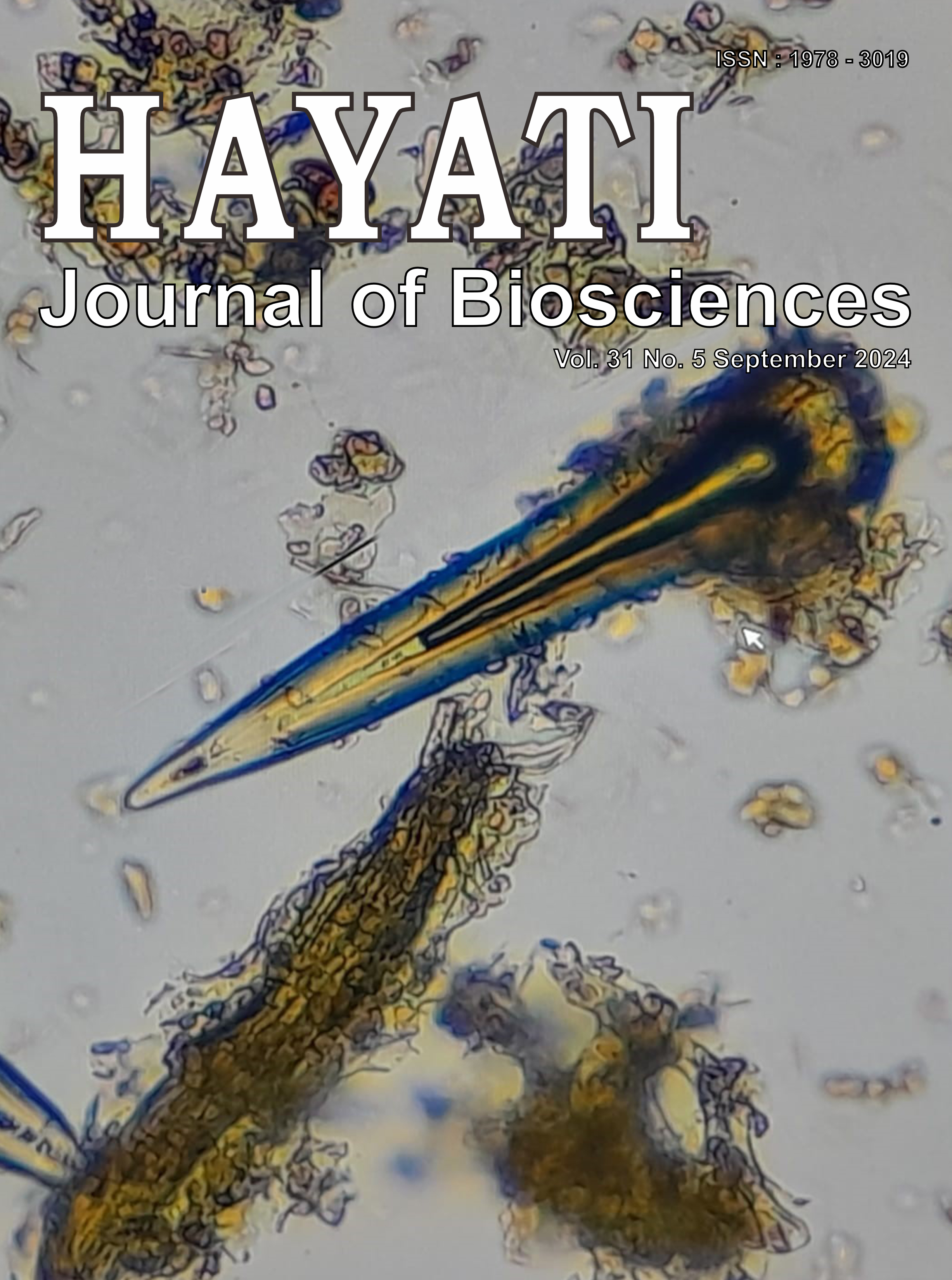Anti-SARS-CoV-2 Activity of Andrographis paniculata (Burm.f.) Nees Extract via Inhibition of Spike-mediated Syncytia Formation in HEK293T Cell Model
Abstract
The resurgence of COVID-19 endemic cases at the end of 2023 has underscored the need for effective treatments. Some severe cases of COVID-19 are often characterized by the formation of multinucleated syncytial pneumocytes in the lungs. Therefore, our study aimed to explore the potential of Andrographis paniculata (Burm. f) Nees as an antivirus against SARS-CoV-2, which involves syncitia formation. We utilized the non-toxic concentrations of A. paniculata extract on HEK293T cells determined by MTT assay, which were 1 μg/ml (cell viability 97.96%) and 10 μg/ml (cell viability 95.24%) for further assays. First, we conducted a pseudovirus cellular entry assay as a model of SARS-CoV-2 infection in HEK293T cells expressing hACE2/TMPRSS2. The HEK293T cells were co-transfected with plasmids expressing hACE2 and TMPRSS2, then infected with pseudotyped spike*∆G-GFP rVSV with or without A. paniculata extract. The internalized pseudovirus would trigger GFP expression as a reporter of the infected cells. Next, we performed a syncytia assay by transfecting HEK293T cells with hACE2, TMPRSS2, and SARS-CoV-2 spike expression vectors to induce syncytia formation as a model of intercellular viral transmission. As the results, 10 μg/mL of the extract significantly lowered the number of SARS-CoV-2 pseudovirus-infected cells by 54.69% (P = 0.02) and spike-mediated syncytia formation by 42.39% (P<0.001). In conclusion, our results suggested that A. paniculata has a potential antiviral activity against SARS-CoV-2 by hindering virus infection and cell-to-cell transmission.
Downloads
Copyright (c) 2024 Pekik Wiji Prasetyaningrum, Ria Fajarwati Kastian, Metta Novianti, Adi Santoso, Endah Puji Septisetyani

This work is licensed under a Creative Commons Attribution-NonCommercial 4.0 International License.
HAYATI J Biosci is an open access journal and the article's license is CC-BY-NC. This license lets others distribute, remix, tweak, and build upon author's work, as long as they credit the original creation. Authors retain copyright and grant the journal/publisher non exclusive publishing rights with the work simultaneously licensed under a https://creativecommons.org/

























.png) IPB University
IPB University Department of Biology
Department of Biology The Indonesian Biological Society
The Indonesian Biological Society 

